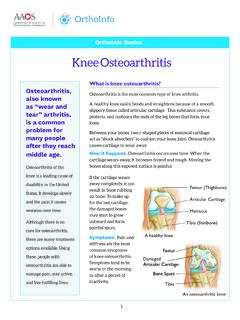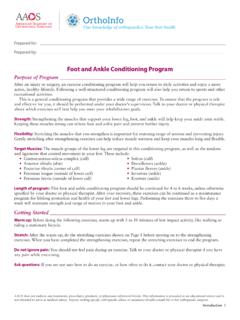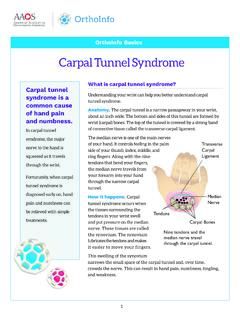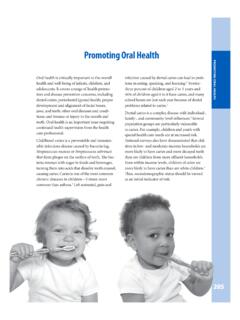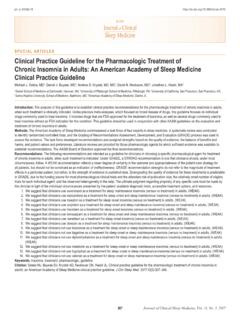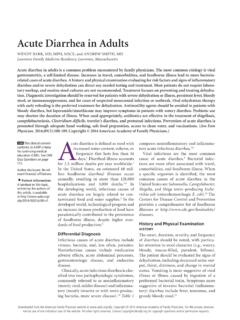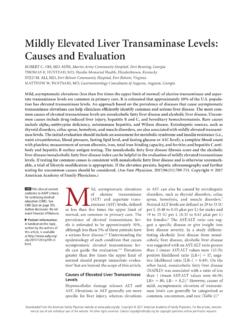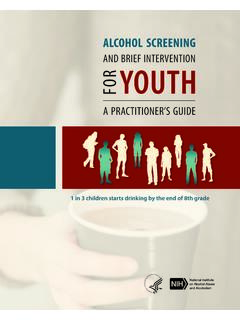Transcription of Rotator Cuff and Shoulder Conditioning Program
1 AAOS does not endorse any treatments, procedures, products, or physicians referenced herein. This information is provided as an educational service and is not intended to serve as medical advice. Anyone seeking specific orthopaedic advice or assistance should consult his or her orthopaedic for: Prepared by:Our knowledge of orthopaedics. Your best Cuff and Shoulder Conditioning ProgramIntroduction 1 Additional NotesPurpose of Program _____After an injury or surgery, an exercise Conditioning Program will help you return to daily activities and enjoy a more active, healthy lifestyle. Following a well-structured Conditioning Program will also help you return to sports and other recreational activities. This is a general Conditioning Program that provides a wide range of exercises. To ensure that the Program is safe and effective for you, it should be performed under your doctor s supervision.
2 Talk to your doctor or physical therapist about which exercises will best help you meet your rehabilitation : Strengthening the muscles that support your Shoulder will help keep your Shoulder joint stable. Keeping these muscles strong can relieve Shoulder pain and prevent further : Stretching the muscles that you strengthen is important for restoring range of motion and preventing injury. Gently stretching after strengthening exercises can help reduce muscle soreness and keep your muscles long and Muscles: The muscle groups targeted in this Conditioning Program include: Deltoids (front, back and over the Shoulder ) Trapezius muscles (upper back) Rhomboid muscles (upper back) Teres muscles (supporting the Shoulder joint) Supraspinatus (supporting the Shoulder joint) Infraspinatus (supporting the Shoulder joint) Subscapularis (front of Shoulder ) Biceps (front of upper arm) Triceps (back of upper arm)Length of Program : This Shoulder Conditioning Program should be continued for 4 to 6 weeks, unless otherwise specified by your doctor or physical therapist.
3 After your recovery, these exercises can be continued as a maintenance Program for lifelong protection and health of your shoulders. Performing the exercises two to three days a week will maintain strength and range of motion in your Started _____Warmup: Before doing the following exercises, warm up with 5 to 10 minutes of low impact activity, like walking or riding a stationary : After the warm-up, do the stretching exercises shown on Page 1 before moving on to the strengthening exercises. When you have completed the strengthening exercises, repeat the stretching exercises to end the not ignore pain: You should not feel pain during an exercise. Talk to your doctor or physical therapist if you have any pain while questions: If you are not sure how to do an exercise, or how often to do it, contact your doctor or physical therapist.
4 AAOS does not endorse any treatments, procedures, products, or physicians referenced herein. This information is provided as an educational service and is not intended to serve as medical advice. Anyone seeking specific orthopaedic advice or assistance should consult his or her orthopaedic knowledge of orthopaedics. Your best health. American Academy of Orthopaedic Surgeons Exercises Page 1 Rotator Cuff and Shoulder Conditioning ProgramSTRETCHING EXERCISES1. Pendulum _____Main muscles worked: Deltoids, supraspinatus, infraspinatus, subscapularisEquipment needed: NoneStep-by-step directions Lean forward and place one hand on a counter or table for support. Let your other arm hang freely at your side.
5 Gently swing your arm forward and back. Repeat the exercise moving your arm side-to-side, and repeat again in a circular motion. Repeat the entire sequence with the other sets of 10 Days per week5 to 6 TipDo not round your back or lock your Crossover Arm Stretch _____Main muscles worked: Posterior deltoidYou should feel this stretch at the back of your shoulderEquipment needed: NoneStep-by-step directions Relax your shoulders and gently pull one arm across your chest as far as possible, holding at your upper arm. Hold the stretch for 30 seconds and then relax for 30 seconds. Repeat with the other each sideDays per week5 to 6 TipDo not pull or put pressure on your does not endorse any treatments, procedures, products, or physicians referenced herein. This information is provided as an educational service and is not intended to serve as medical advice.
6 Anyone seeking specific orthopaedic advice or assistance should consult his or her orthopaedic knowledge of orthopaedics. Your best health. American Academy of Orthopaedic Surgeons Exercises Page 2 Rotator Cuff and Shoulder Conditioning ProgramSTRETCHING EXERCISES3. Passive Internal Rotation _____Main muscles worked: Subscapularis You should feel this stretch at the front of your shoulderEquipment needed: Light stick, such as a yardstick Step-by-step directions Hold a stick behind your back with one hand, and lightly grasp the other end of the stick with your other hand. Pull the stick horizontally as shown so that your Shoulder is passively stretched to the point of feeling a pull without pain.
7 Hold for 30 seconds and then relax for 30 seconds. Repeat on the other each sideDays per week5 to 6 TipDo not lean over or twist to side while pulling the Passive External Rotation _____Main muscles worked: Infraspinatus, teres minor You should feel this stretch in the back of your shoulderEquipment needed: Light stick, such as a yardstick Step-by-step directions Grasp the stick with one hand and cup the other end of the stick with the other hand. Keep the elbow of the Shoulder you are stretching against the side of your body and push the stick horizontally as shown to the point of feeling a pull without pain. Hold for 30 seconds and then relax for 30 seconds. Repeat on the other each sideDays per week5 to 6 TipKeep your hips facing forward and do not does not endorse any treatments, procedures, products, or physicians referenced herein.
8 This information is provided as an educational service and is not intended to serve as medical advice. Anyone seeking specific orthopaedic advice or assistance should consult his or her orthopaedic knowledge of orthopaedics. Your best health. American Academy of Orthopaedic Surgeons Exercises Page 3 Rotator Cuff and Shoulder Conditioning ProgramSTRETCHING EXERCISES5. Sleeper Stretch _____Main muscles worked: Infraspinatus, teres minor You should feel this stretch in your outer upper back, behind your Shoulder Equipment needed: NoneStep-by-step directions Lie on your side on a firm, flat surface with the affected Shoulder under you and your arm bent, as shown. You can place your head on a pillow for comfort, if needed.
9 Use your unaffected arm to push your other arm down. Stop pressing down when you feel a stretch in the back of your affected Shoulder . Hold this position for 30 seconds, then relax your arm for 30 reps, 3x a dayDays per weekDailyTipDo not bend your wrist or press down on your does not endorse any treatments, procedures, products, or physicians referenced herein. This information is provided as an educational service and is not intended to serve as medical advice. Anyone seeking specific orthopaedic advice or assistance should consult his or her orthopaedic knowledge of orthopaedics. Your best health. American Academy of Orthopaedic Surgeons Exercises Page 4 Rotator Cuff and Shoulder Conditioning ProgramSTRENGTHENING EXERCISES6.
10 Standing Row _____Main muscles worked: Middle and lower trapezius You should feel this exercise at the back of your Shoulder and into your upper back Equipment needed: Use an elastic stretch band of comfortable resistance. As the exercise becomes easier to perform, progress to 3 sets of 12 repetitions. If you have access to a fitness center, this exercise can also be performed on a weight machine. A fitness assistant at your gym can instruct you on how to use the machines directions Make a 3-foot-long loop with the elastic band and tie the ends together. Attach the loop to a doorknob or other stable object. Stand holding the band with your elbow bent and at your side, as shown in the start position. Keep your arm close to your side and slowly pull your elbow straight back.

